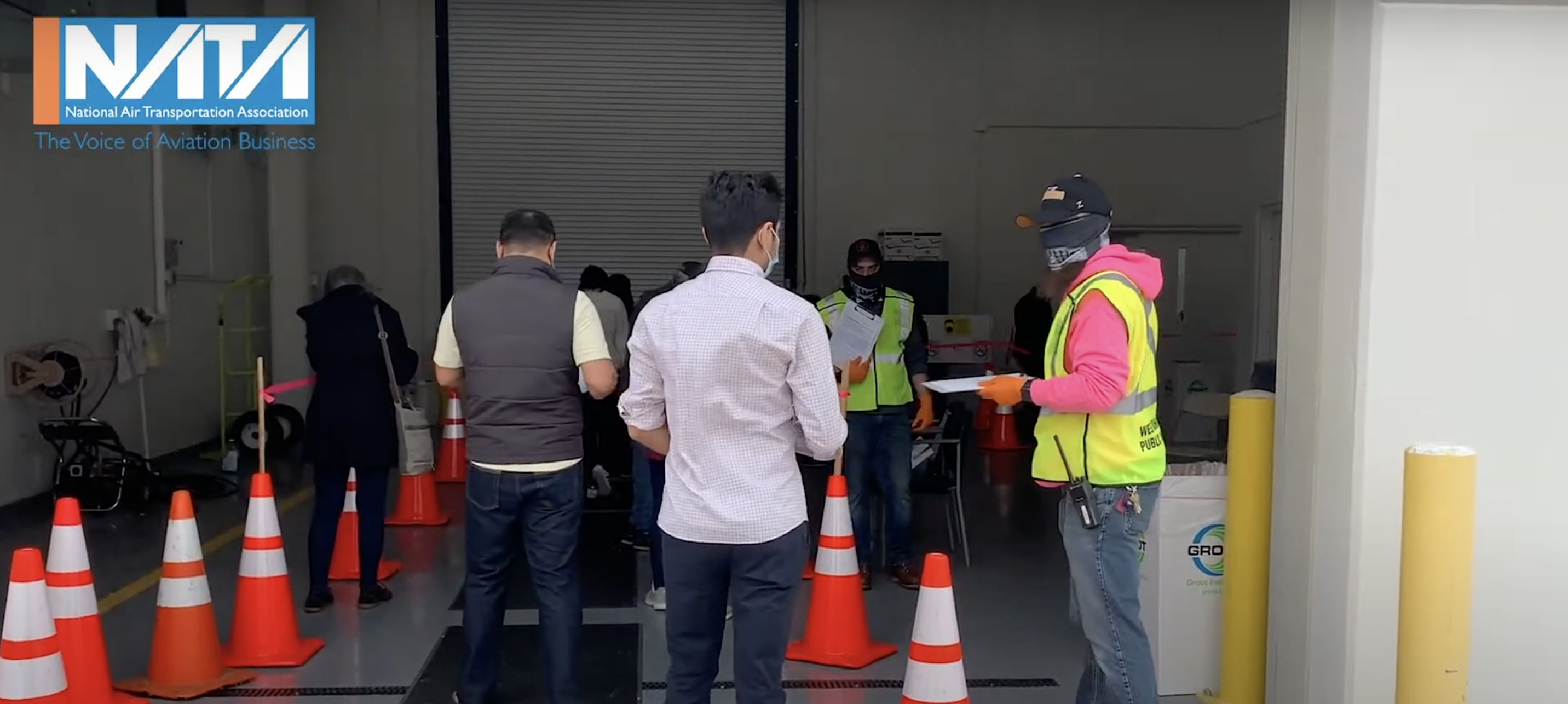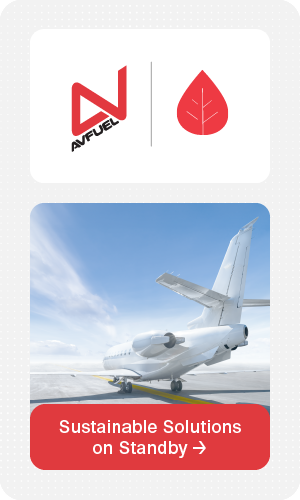It doesn’t take much for aviators to find a reason to take to the air, but throw in an emergency and they immediately take flight. Bringing important air assets to life-and-death missions around the world, general aviation delivers much-needed emergency supplies and provides critical medical airlift.
“Airlines, cargo carriers, and surface transport can only go so far, but general aviation can penetrate the most hostile aviation environments. Our aircraft are capable of accomplishing a larger mission profile, making general aviation key to completing the mission,” National Air Transportation Association Senior Vice President Ryan Waguespack told the Aviation Business Journal. “Private aviation aid groups in the United States are now very sophisticated in providing and coordinating airlift relief. Most of what we see around the world, however, is ad hoc and lacks the organization that would give governments a turn-key solution to leverage aviation during emergencies, whether that be vaccine distribution, hurricane relief, or earthquake response.”
Waguespack pointed to the actions taken by numerous organizations—including NATA, AOPA, and NBAA—to bring air and ground assets to bear in the wake of Hurricane Ida. After partnering with AERObridge, NATA put out a call to its members.
AERObridge is a consortium of aviation aid organizations including the Air Care Alliance, Air Charity Network, Air Serve International, Angle Flight Southeast, Emergency Volunteer Air Corps, Operation Airdrop, and Samaritan’s Purse, among many others.
This powerful consortium is critical to building similar efforts around the world because of its experience integrating general aviation air and ground support with the Federal Emergency Management Administration (FEMA) response, having been active with FEMA since Hurricane Katrina in 2005. AERObridge also provided support for the 2010 earthquake in Haiti and the 2011 nuclear disaster in Japan, as well as Hurricane Sandy in 2012. Similarly, Operation AirDrop was founded in 2017 after Hurricane Harvey revealed that air access is often the only way to bring in supplies when a natural disaster leaves roadways flooded.
But, as NATA and others found out during COVID-19 vaccine distribution efforts earlier this year, many government agencies still don’t understand how the general aviation ecosystem can help.
COVID-19 Lessons
Waguespack said aviation interests in the United States and abroad were rebuffed when offering to help in vaccine distribution. Waguespack also cited the dominance of the COVID-19 Delta variant as reason enough to ensure aviation is part of all disaster planning—not just after natural disasters.
“Government bodies responsible for disaster relief are not aware of the current infrastructure available to them through general aviation and rural airports,” Waguespack reported. “Most government agencies have no concept of how private flying can function when ground transport is impossible—and we haven’t done a good job of telling our story. When we met with FEMA on vaccine distribution, they were working on acquiring RVs even though most places they wanted to reach were within 10 to 15 miles of an airport. We had to educate them on Aviation A to Z, walk them through the entire process of what it would look like to integrate aviation, and explain the potential it holds for disaster response. That is why we need to see collaboration across associations and other non-profit flying organizations: so we can go to regulators and emergency managers and make it happen.”
He pointed out that months ago, it was estimated that getting the world vaccinated would take two to three years, given the remoteness of thousands of communities around the globe.
“As we have seen with the Delta variant, new forms of the disease can reinvade us and make a pandemic like COVID-19 a permanent fixture in our lives,” he explained. “Soon we will have to deal with the Mu variant out of Colombia. Yet we recently learned only ten percent of the world population is vaccinated despite the massive distribution effort that continues to this day. Aid organizations criticize the developed world for offering booster shots given the low vaccination rates around the world; instead, they should be talking about distribution that would bring vaccines to remote villages by air. Right now, governments are not set up to do that and ad hoc efforts aren’t enough.”
NATA is facilitating the effort to integrate general aviation air and ground assets into global health disaster responses, but the Association needs all general aviation stakeholders to join. Waguespack recounted how general aviation helped the Veterans Administration’s vaccine efforts in Montana: the government agency worked with air carriers to transport not only vaccine doses, but the nurses to administer them, in private Learjets. When doses were left over, they could be delivered to a second airport—preventing the waste of unused doses. Another local government agency used private pilots to reach residents of a small, isolated island in Lake Michigan, and the Civil Air Patrol provided equitable access to remote communities by delivering both vaccines and PPEs.
“Our industry is fluid, and we are always prepared to go,” he continued. “We just have to organize it. The military knows readiness comes from being prepared 95% of the time to move on the drop of a dime. We can do that, too. We are good at mobilizing to get things done quickly and efficiently. The pandemic was a test for general aviation, and we saw a huge shift of passengers from airlines to private aviation. I think that makes us better able to provide emergency services. There is a resurgence of interest in aviation with people buying aircraft and dusting off their certificates with recurrent training. It just adds more layers, more depth, to our capabilities.”
Putting General Aviation in a New Light
“While humanitarian missions are reason enough, the pandemic is a golden opportunity for aviation to show what it can do,” he continued. “At a time when it is almost impossible to shed our rich-guy image, creating an emergency airlift team illustrates our commitment to service—an opportunity that cannot be missed. And with airports increasingly under threat, we need to show just how important general aviation airports are to the health and safety of a community, especially when it comes to equitable coverage. Industry groups talk about the value of private aviation, but our humanitarian service efforts
are rarely covered. This type of effort could change that, and now is the time with so much emphasis being placed on infrastructure.”
During COVID, association members across multiple segments provided patient airlift as well as delivering PPE equipment. They also participated in the Spirit of Liberty Foundation’s “America’s Operation Thank You: Relay in the Sky,” a tribute to healthcare professionals and first responders, which was designed as a way for the general aviation community to honor those who have been putting their lives on the line to care for others during the COVID-19 pandemic.
Business aviation is no stranger to emergency response, and has long served as a lifeline to people and communities in crisis because airliners and sometimes even automobiles cannot access disaster areas, National Business Aviation Association told the Aviation Business Journal. Those wishing to register their aircraft or themselves for emergency response work are able to do so through a Humanitarian Emergency Response Operator (HERO) Database. Volunteers include pilots, flight attendants, aviation maintenance technicians and ground support professionals. The site enables relief organizations to connect with more than a dozen aviation groups providing emergency response services. It has a section on best practices as well as a list of organizations across the general aviation community which coordinate the use of business airplanes and other assets for humanitarian purposes.
Governments Don’t Think About Role of Aviation in Emergencies
Waguespack has been discussing the emergency coalition idea at several aviation venues, including EAA AirVenture. “The response has been overwhelmingly positive. Everyone agrees it’s a great idea, but people think it will entail a lot of work. What they don’t realize is the wheel has already been invented in the U.S. but not everyone knows about it. These discussions are reenergizing NATA members who are already engaged with bridging the gap between airports and downtown. But we need to take it further and create a coordinated effort where each segment collaborates to create an emergency air force; then, general aviation can take the handoff from those already in the mix such as air cargo companies, to reach the over 5,000 airports in the U.S. alone that do not have commercial service. These airports serve as gateways to countless communities, engage their networks to collect and stage critical supplies, and provide ground handling services to enable these missions.”
The problem, according to the General Aviation Manufacturers Association (GAMA) Vice President of European Affairs Kyle Martin, who spoke at a recent webinar on how private aviation can contribute during emergencies, is governments don’t know what to do with aviation. Upon reaching out to the European Commission and all the EU member states to offer GA assistance in distributing vaccines, their response was that vaccine distribution is left to each individual member state, or sometimes region.
“These authorities don’t think about general aviation as a useful asset in the toolbox. It gives massive flexibility for these missions and can access remote locations on islands, jungles and mountain regions,” Martin said.
This experience is not new. In 2017, after the twin disasters from hurricanes Irma and Maria in the Caribbean, Luxaviation, which has a helicopter operation out of St. Maarten, offered its services to airlift supplies to the area and bring out survivors but the governments
did not know what to do with such valuable help and it went unused.
Bureaucratic Labyrinth
In addition to having to educate governments on how aviation can help, there is also a massive labyrinth of approvals needing to be resolved especially across borders, according to Mission Aviation Fellowship (MAF), which works in developing countries to shrink the distance between emergency and health services and villages by air. MAF Disaster Response and International Development Expert Daniel Juzi estimates it would take two to three years before COVID vaccinations are complete without aviation, giving the virus time to mutate and re-infect those areas already vaccinated.
The value of the Idaho-based non-profit is seen in its reach. Each year it serves 3,000 airstrips with 65,000 to 85,000 flights and 180,000 passengers worldwide. Although MAF partners with health organizations to deliver medical services, few local governments and health authorities incorporate aviation into their plans while others default to military distribution, according to Juzi.
“A challenge we have seen and already know is there are considerable hurdles,” he explained during a recent webinar. “Health authorities are very much directing efforts in some areas but not others. It is also high in cost and time to serve many remote areas and using aviation could bring the cost down. You have to have the regulators on board. Being willing and able is one thing, but how can we do this legally and be compliant? We can if we prepare ahead of time.”
Advanced Emergency Planning
Since governments are already overwhelmed during emergencies and don’t necessarily turn to aviation and its network of ground handling resources, Waguespack thinks it is up to aviation to develop turn-key solutions for them and then use their member and government contacts to sell the program throughout the world.
“We can leverage our considerable government aviation contacts to gain access to health and other government officials to educate them on how GA can respond to a disaster,” said Waguespack. “The aviation footprint is huge as we saw with GAMA’s efforts in Europe. The organization immediately stepped up, but the bureaucracy stopped them dead in their tracks. What is needed is a global effort leveraging the knowledge and contacts of all the business and general aviation groups. The National Association of State Aviation Officials and airport associations could bring their expertise to bridge the gap between aviation and emergency management. NBAA has expanded to nearly every continent, GAMA’s members are from all over the world, and AOPA has a global following. And, most importantly, their members are more than willing to assist as we’ve seen during disasters here in the U.S.”
He noted the number of medical air evacuation companies which understand both aviation and emergencies who could contribute to the effort such as MedAire, the first aviation global medical emergency response organization, along with hundreds of NGOs already using air services.
Waguespack said the industry must first support and build on the aviation groups who have worked so successfully during natural disasters to create the emergency air force and organize how it can be integrated into all emergency efforts. Only then can it successfully leverage their governmental aviation connections to access health and emergency management officials.
“We need to rally the troops to formalize our approach internationally, collaborate and share lessons learned from those already doing the work around the world so we know what works and what doesn’t and be able to scale it,” he said. “We must coordinate a plan that can be delivered to legislators, emergency managers, defense departments, aviation and security regulators, disease control, public health officials. TSA already asked us what it needs to do to collaborate better with the private sector, so we need to demonstrate what we can do for them.”
There’s an old adage: never let a crisis go to waste. The aviation industry shouldn’t let this opportunity pass.
By Kathryn B. Creedy






